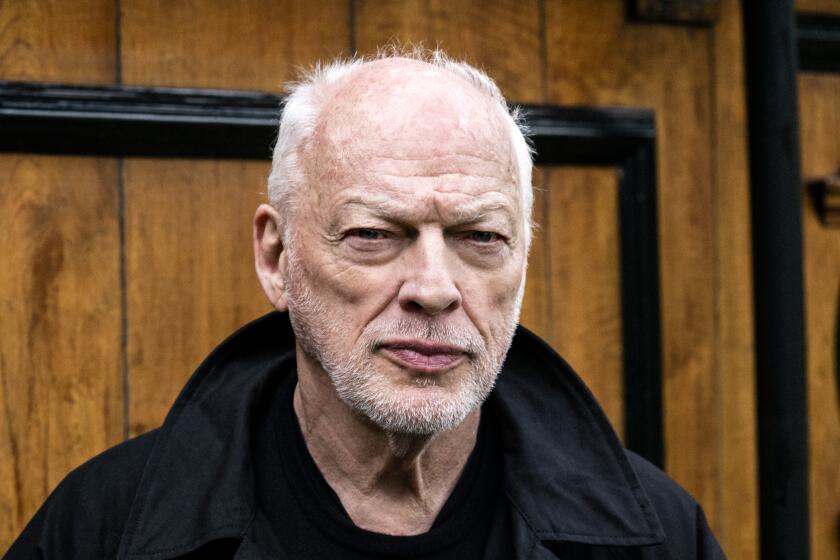Review: Bjork explores nature in ‘Biophilia’ at the Palladium
- Share via
Björk began her Sunday night concert at the Hollywood Palladium with a definition of terms, and as usual for Iceland’s foremost sonic adventurer, those definitions were about as broad as possible.
“Welcome to ‘Biophilia,’” said the British broadcaster David Attenborough in a recorded voiceover, “the love for nature in all her manifestations.” Later, Attenborough described music as “sound harnessed by human beings, delivered with generosity and emotion.”
“Biophilia” is Björk’s latest burst of ambition, released in 2011 as an album of songs along with a system of interactive apps for the iPad and iPhone. It’s also the live show she’s slowly touring around the world, starting two years ago at the Manchester International Festival in England. Sunday’s performance was the first of three at the Palladium, which will be repeated Wednesday and Saturday before a concert June 11 at the Hollywood Bowl.
As Attenborough’s narration suggested, Björk’s subject throughout these interconnected pieces (there are also educational workshops for children, including one held Sunday at L.A.’s Museum of Contemporary Art) is the wild and contradictory sprawl of the universe’s many wonders. There’s the beauty and order depicted in tunes with titles such as “Moon” and “Solstice” but also the terror and mystery of “Dark Matter” and “Thunderbolt.”
At the Palladium, that complexity was further reflected in an in-the-round stage crammed with eye-popping components.
There were her human collaborators, including two multi-instrumentalists, avant-jazz harpist Zeena Parkins and an 18-member women’s choir clothed in shimmering garments that split the difference between a tunic and a garbage bag.
And there were machines such as a remote-controlled pipe organ, the gigantic set of wooden pendulums known as the gravity harp and eight video screens arranged over the heads of the performers. It was enough that Björk’s wig – a frizzy, multicolored mass reminiscent of a rainbow snow cone – didn’t especially demand much of your attention. (The singer barred media from photographing Sunday’s show.)
Yet as beautifully as she transformed a historic Hollywood dance hall into a futuristic idyll, Björk’s music only occasionally proved as powerful. Songs from “Biophilia” offered handsome textures and sturdy singing – with Björk the singing is always sturdy – but few arresting beats or melodies to anchor them. Often she and the choir sounded like they were simply warming up, moving through private vocal exercises meant to tighten their densely braided harmonies.
“I shuffle around the tectonic plates,” Björk sang in “Mutual Core,” and the lyric unintentionally caught some of the aimlessness in the high-minded music.
She was far more effective in older songs she interspersed among the new material: “Hidden Place” and “Pagan Poetry,” spectral ballads from 2001’s “Vespertine”; “Where Is the Line,” in which Manu Delago’s juddering electronic percussion scraped against the choir’s sustained flutter; and “Declare Independence,” a fuzzy digital-punk track that turned the stage into a mosh pit of fabric and hair.
During her encore Björk pointed to a Tesla coil in a cage behind Delago’s drum set and said she’d been trying to “squeeze our new toy into more songs.” Then she did a stripped-down version of her mid-’90s semi-hit “Possibly Maybe” with jolts of electricity for the track’s bass line. Here, finally, Björk was inspiring the kind of natural wonder that “Biophilia” sets out to capture.
ALSO:
In Rotation: Laura Mvula, ‘Sing to the Moon’
Bob Dylan reportedly on track for France’s Legion of Honor
Joshua Homme and Queens of the Stone Age are back on the clock
Twitter: @mikaelwood
More to Read
The biggest entertainment stories
Get our big stories about Hollywood, film, television, music, arts, culture and more right in your inbox as soon as they publish.
You may occasionally receive promotional content from the Los Angeles Times.











